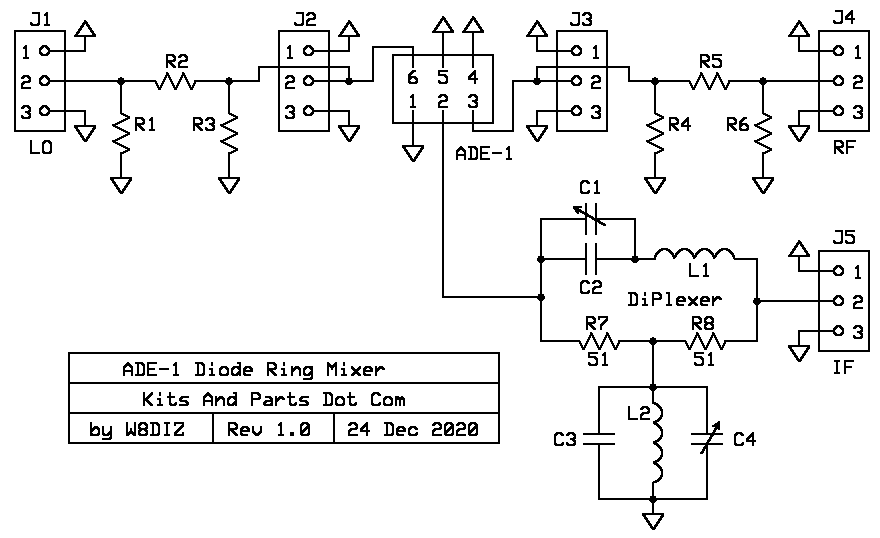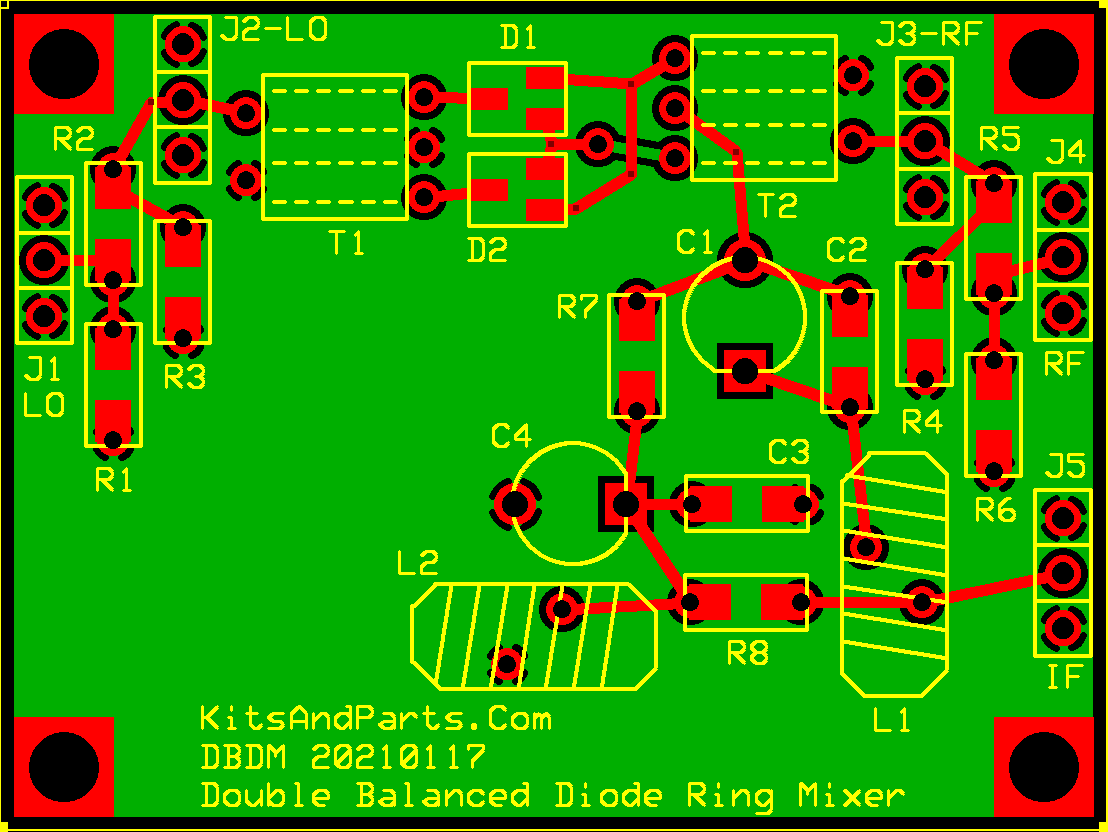Difference between revisions of "Kits and Parts Mixers"
Jump to navigation
Jump to search
Blwikiadmin (talk | contribs) |
Blwikiadmin (talk | contribs) |
||
| Line 34: | Line 34: | ||
== Bridged Tee Diplexer == | == Bridged Tee Diplexer == | ||
| + | |||
| + | <blockquote>Diplexor is a bandpass/band-stop filter popularized by [https://www.youtube.com/watch?v=iVUv8C-8g-Y Joe Reisert W1JR] that is used after a double Balanced Mixer to provide a 50 ohm termination to all frequencies at the mixer's IF port, and to the following amplifier stage. Maintaining a consistent load at the mixer avoids overload and Inter-Modulation Distortion (IMD) effects that these mixers are prone to when not properly terminated.</blockquote> | ||
* [https://www.qsl.net/g3oou/mixerterminations.html Mixer Diplexer description] | * [https://www.qsl.net/g3oou/mixerterminations.html Mixer Diplexer description] | ||
* [https://www.changpuak.ch/electronics/calc_16a.php Diplexer Calculator (Bridged Tee) Diplexer Calculator] | * [https://www.changpuak.ch/electronics/calc_16a.php Diplexer Calculator (Bridged Tee) Diplexer Calculator] | ||
| − | |||
| − | |||
<video type="youtube">zOk_0IiIgZY</video> | <video type="youtube">zOk_0IiIgZY</video> | ||
Revision as of 01:14, 26 September 2021
Contents
Common Kits and Parts Mixers Features
- All Ports are 50Ω
- +7dBm Local Oscillator Injection Design
- Full Diplexer at the IF Port
- Optional Attenuators for RF & LO Ports
Kits and Parts ADE-1 Mixer
- Kits and Parts Mixer
- 7 MHz RF, 40 M band
- 16 MHz LO
- Si5351A square wave drive, 50 Ohm source impedance, 1.65V peak
- 9 MHz IF
Kits and Parts Diode Mixer
- Double Balanced Diode Ring Mixer Kit
- All Ports are 50Ω
- +7dBm Local Oscillator Injection Design
- Full Diplexer at the IF Port
- Optional Attenuators for RF & LO Ports
Bridged Tee Diplexer
Diplexor is a bandpass/band-stop filter popularized by Joe Reisert W1JR that is used after a double Balanced Mixer to provide a 50 ohm termination to all frequencies at the mixer's IF port, and to the following amplifier stage. Maintaining a consistent load at the mixer avoids overload and Inter-Modulation Distortion (IMD) effects that these mixers are prone to when not properly terminated.



